Moms all over will tell you that even though they’ve enjoyed breastfeeding, it wasn’t all rainbows and butterflies at the beginning.
Breastfeeding pain isn’t something you think much of beforehand, and it often comes as a bit of a surprise.
You’re planning your delivery, arranging the baby’s room and getting ready for the biggest adventure of your life, hoping you’ll be able to breastfeed your baby, but the fact that it might hurt or be uncomfortable rarely crosses your mind.
Or maybe you’ve asked some of your more experienced friends questions about breastfeeding such as “Is breastfeeding painful?” or “What does breastfeeding feel like?”
All the answers you got came down to one thing: It can get tricky, but it’s still the most beautiful thing in the universe. This made you feel like there’s nothing to worry about.
Right now, you’re nursing your baby and somehow it hurts so much more than you could have guessed.
And as a new mom, you’re probably wondering “Is it normal for breastfeeding to be painful?”
There’s really nothing to worry about.
There are many reasons for breastfeeding to hurt, and I’m going to help you figure out yours and find the easiest possible solution for it.
1. Improper latching
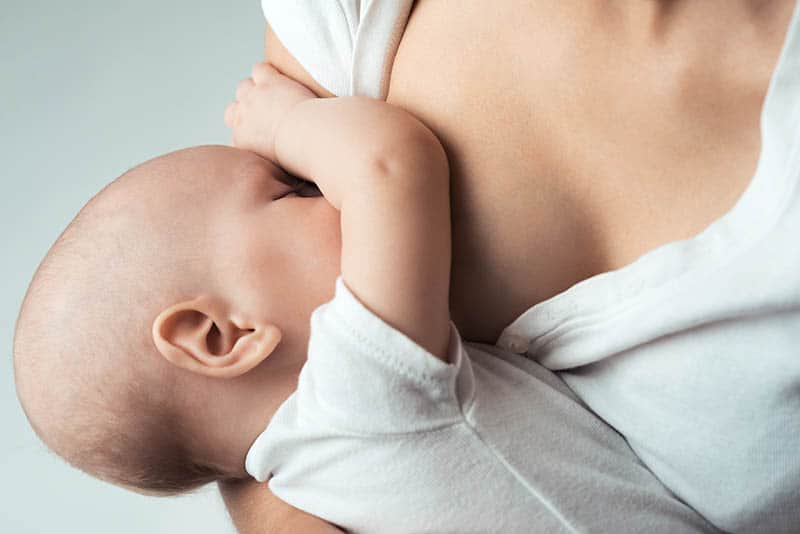
There are many positions you and your baby can take when breastfeeding, and they are all fine as long as they are comfortable for both of you.
One incredibly important factor to consider is the way your baby’s mouth is positioned on your breast.
Proper latching works like this:
– You want to have your whole areola and nipple in your baby’s mouth, otherwise, his latch will be too shallow and that HURTS. Your goal is to get your baby to latch deeper.
– To ensure your baby’s latch is deep enough, you need to make sure he is close enough to the breast, so support him with a pillow or two. Check for the way he is positioned throughout the feed and make sure you’re super comfortable. Don’t be afraid to change positions during the feed.
– Check that his nose is not touching your breast. In case it is, you’ll want to try to hold your breast with your fingers to ensure your baby can breathe easily.
– One sign your baby is latching properly is that his lower lip will be covering most of the lower areola and both lips will be flanged outward.
– If you feel that the latch is uncomfortable or painful for you, what you can do is very gently place your little finger inside of your baby’s mouth, separate him from the breast, and try it all over again until it’s perfect. This may seem like extra trouble at the time, but it’s worth the effort.
Not only does a shallow latch hurt, but it can give rise to some additional issues, as I’ll cover below.
If you can’t seem to get your little one to latch on correctly, you might want to get breastfeeding help from a lactation consultant, especially in the first week when it’s extremely important for your baby to get the necessary nutrition.
They will check for any possible abnormalities that may cause your baby to be unable to latch the way he should.
2. Engorgement

A couple of days after you’ve given birth (1-7 days), your milk will really come in. This usually results in your breasts being huge and painful. Let-down of milk can really hurt at this stage.
Your breasts don’t only fill up with milk though, but also with blood and other bodily fluids.
If you’re experiencing breast engorgement, you’ll feel breastfeeding pain in the breast, not nipple.
It usually happens at the very beginning of breastfeeding, but it can happen any time, due to improper latching (which leaves a lot of milk in the breast) or changed feeding patterns.
In the beginning, your body is trying to figure out how much milk is enough milk for your baby and it sometimes produces too much, but soon enough the amount you produce will be exactly the milk supply your baby needs.
The best way to deal with breast engorgement is to prevent it from even happening.
You can do that by feeding your little one on demand (whenever they want to), and also by avoiding giving your baby any other type of liquid (formula or water), since this can affect your milk production.
How to relieve breast engorgement:
Your goal is to empty your breast. There are two ways you can do that – the baby can drink that milk, or you can pump it out.
To improve your milk flow, you can take a warm shower right before nursing (don’t do this if you don’t intend to breastfeed right after, since you’ll only make things worse because you’ll get the milk flowing but it will stay inside the breast).
Another thing you can try is massaging your breasts, starting at your chest down to the nipple, before or during the feed.
If your breasts still feel full after your baby has finished nursing, express as little milk as possible (just until you feel relief) because expressing too much will signal your body that your baby needs even more milk, resulting in an even bigger problem and more pain for you.
If none of this helps, you might want to contact a lactation consultant who’ll possibly even pump out the milk completely to prevent inflammation and mastitis.
3. Blocked milk duct

This is exactly what it sounds like. A little bit of milk coagulates and creates a lump, which makes the drainage of that duct impossible.
This results in discomfort, redness of the skin at that part of your breast, and sometimes a small blister on your nipple.
This is another problem that can be caused by improper latching, but there are also other common causes such as wearing a bra that’s not comfortable enough (too small or too tight) or trying to feed by the clock instead of on-demand, which leaves too much milk in the breasts for longer periods of time.
Another sign that you have a blocked milk duct is noticing your baby is fussy when suckling from that breast (this happens because the milk flow is not satisfying your little one’s hunger).
In order to prevent plugged ducts, you should wear your bra as comfortably as possible, and try to go braless whenever you can, especially when breastfeeding.
Also, you want to try changing up your feeding positions regularly, which will help to make sure all of the milk ducts in your breasts are drained properly at all times.
How to get rid of a plugged duct?
– Apply heat (maybe hydrogels) on the affected spot before or during a feed.
– Always start a feed with the affected breast.
– Change positions until you find one that helps drain that duct.
– Try to massage the affected spot with a little bit of pressure in order to try and break the blockage.
– Right after a feed, apply cold to the affected spot to help relieve pain and avoid inflammation.
– Remember to rest as much as possible.
4. Mastitis
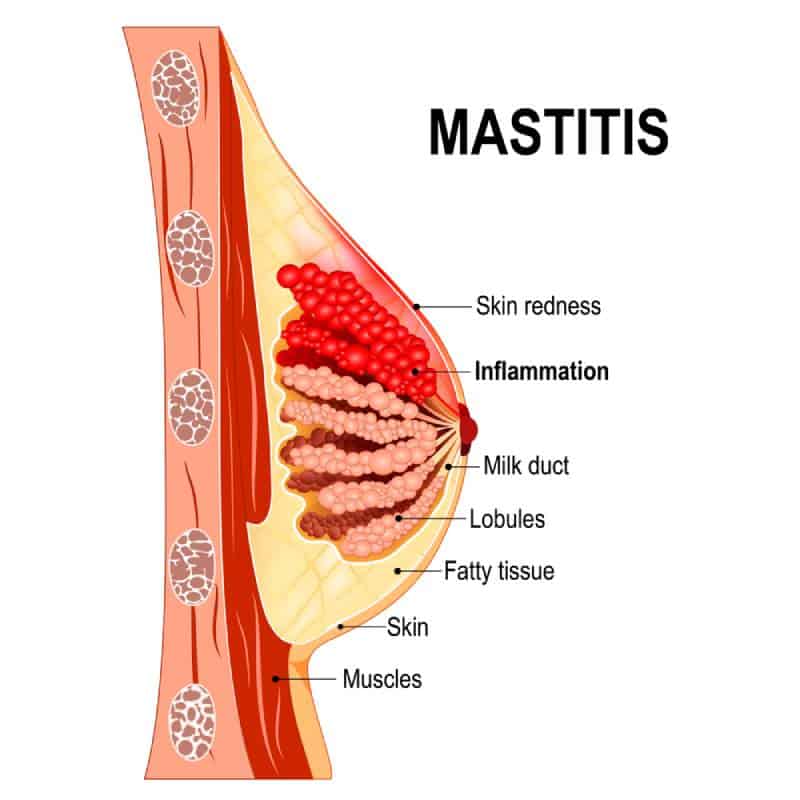
Another cause of breast pain when breastfeeding is mastitis. Mastitis is the inflammation of breast tissue, which sometimes even includes a breast infection that requires antibiotic treatment.
If your breasts are swollen, red, warm, and painful, there’s a good chance you have mastitis.
One thing that’s very different with this condition than with other conditions that may cause you to feel breastfeeding pain is the fact that you’ll feel generally very sick and run down, and probably develop a high fever.
Mastitis can be caused by a blocked duct that wasn’t treated in time, but it can also be caused by bacteria entering your breast.
While you can treat it the same way you would treat a blocked duct, if it lasts longer than 24 hours, it’s best to contact a health professional to decide if you need any further treatment.
The important thing to remember:
Many new moms think that they need to stop breastfeeding from the infected breast, which isn’t true. The best possible treatment for your breast is to allow your baby to nurse from it.
It doesn’t present any risk for your baby – it’s perfectly safe and advised to continue breastfeeding your child. Make sure your baby has a good latch so they don’t irritate your breast further.
You will probably feel very tired though, so it’s best to arrange for some help so you can rest as much as possible and feed your baby in a laid-back, relaxed atmosphere (it will probably hurt like crazy, and that’s normal).
An additional complication that can occur is the collection of pus (abscess) in your breast, which needs to be surgically drained – another reason you’ll need to contact your doctor if your symptoms don’t go away within 24 hours.
5. Cracked and sore nipples
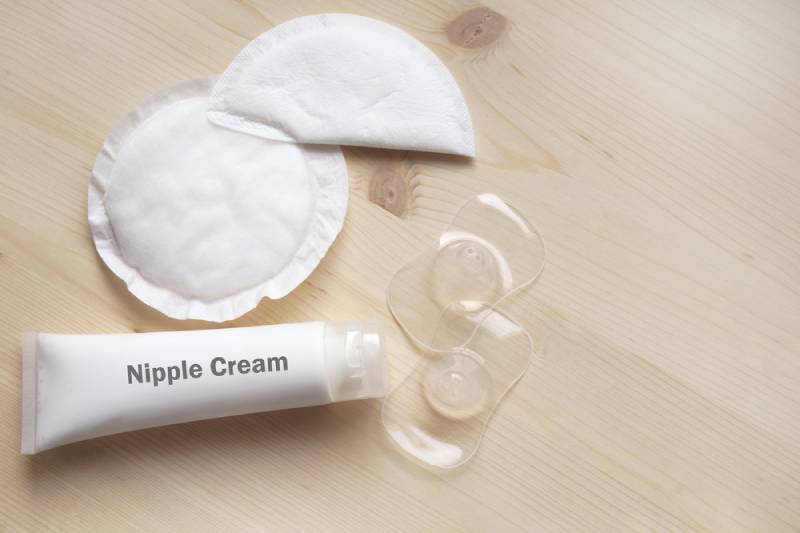
Nipple pain when breastfeeding in the early days is completely expected, especially for first-time moms.
Both you and your baby are getting used to this and it can take a few days until your baby latches properly.
One thing is certain, chapped nipples hurt. The first thing to know is that this is completely normal and it usually heals very quickly.
To help your sore nipples heal, you might want to try a lanolin ointment. Make sure the product you use is safe for your baby to ingest.
You really don’t want to go through the trouble of thoroughly washing your breasts before every feed (which might irritate your nipples further and make the pain worse).
You can also rub a bit of your own breast milk on the nipple to help it heal faster. Make sure you always leave your nipples to air dry after a feed.
If you’re a couple of weeks in and you still have this kind of issue, the best thing to do is contact the health care provider who might want to check if there’s some underlying problem with your nipple (such as infection) or your baby’s tongue (such as a tongue-tie or a short lingual frenulum).
6. Milk blisters

A milk blister is basically a blocked nipple pore.
It appears as a small white (it can also be yellow or clear) blister on your nipple and it happens when a bit of skin grows over a milk duct opening.
There’s a difference between a milk blister and the blister that appears as a result of a blocked duct. When you have a milk blister, the pain will be concentrated at that very spot on the nipple.
The thing about them is that they are very persistent and can last for a few weeks before they resolve on their own when the skin peels away from that area.
How to help a milk blister resolve?
– Apply saline soak to the blister first.
– Apply a wet heated pad on the blister to make it softer before feeding, and a saline soak directly afterward.
– You can also gently rub the area with a hot wet washcloth and encourage the liquid in the blister out if you see it surfacing.
– You can also try doing everything you would do if you had a blocked duct, since there will be milk stuck behind the blister.
– If none of the above works, ask a health professional to open it with a sterile needle.
– Whatever you do, remember NOT TO try pop the blister, as this can push bacteria deeper into the nipple.
7. Thrush

First things first: Thrush in newborns is very common and completely harmless.
So, what is it? It’s a yeast infection with the following symptoms.
Baby might have:
– white patches on the tongue, throat, inner cheeks, and palate
– mouth soreness and pain
– possible diaper rash
Mom might experience the following:
– pink nipples, and the area around them may be slightly red
– there may sometimes be a white rash
– burning, itching, or stinging pain
– the pain doesn’t go away no matter which breastfeeding position you feed your baby in
– the pain usually occurs in between feeds, typically immediately after a feed
How to treat thrush?
It can be that you got thrush from your baby or that he got it from you – whichever the case, it needs to be treated in both of you.
Antifungal creams or tablets are used to treat nipple or breast thrush, and oral gel or drops are used to treat thrush in the baby’s mouth.
There are also creams you can use on your baby’s diaper area. It’s best to get advice from your doctor on which products to use.
Another thing you’ll want to do is keep your nipples dry at all times so the infection doesn’t spread, and change your nursing pads often.
Pay extra attention to keeping your baby’s bottles, pacifiers, and teething toys clean.
Also, make sure you always thoroughly clean both your and your baby’s hands after you change his diaper so you prevent the infection from spreading from one place to the other.
8. Incorrect breast pump use
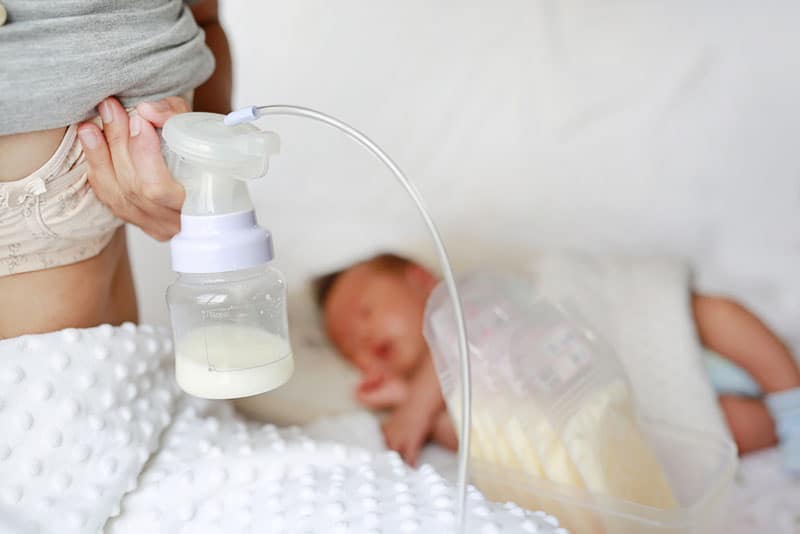
If you’re using a breast pump, there’s a chance that you’re not using the correct nipple shield size, or that you’re using a vacuum setting that’s too high for you.
This can result in additional nipple soreness, which can cause breastfeeding problems.
Another mistake you may make when using a pump is to press the flange too hard into the breast, which, much like an ill-fitting bra, can increase your chances of getting a blocked milk duct.
Using your breast pump in an incorrect manner can result in many of the problems that stop you from having a pain-free breastfeeding experience, so it’s best to get some breastfeeding support from a professional who will teach you to use it correctly.
In Conclusion
While it’s perfectly normal and expected to experience painful breastfeeding, that doesn’t mean you shouldn’t be looking for the reason to and solution for it.
All things considered, breastfeeding is one of the most beautiful things you’ll ever have a chance to do, so make sure you make it as comfortable and enjoyable as possible.
I hope you find relief from breastfeeding pain and enter a stage of pure bliss while feeding your little one and bonding with them.
READ NEXT: 54 Best Breastfeeding Quotes To Motivate Nursing Mamas
Like this post? Please share or pin it for later. You can also stay in the loop and follow us on Facebook, Instagram and Pinterest.
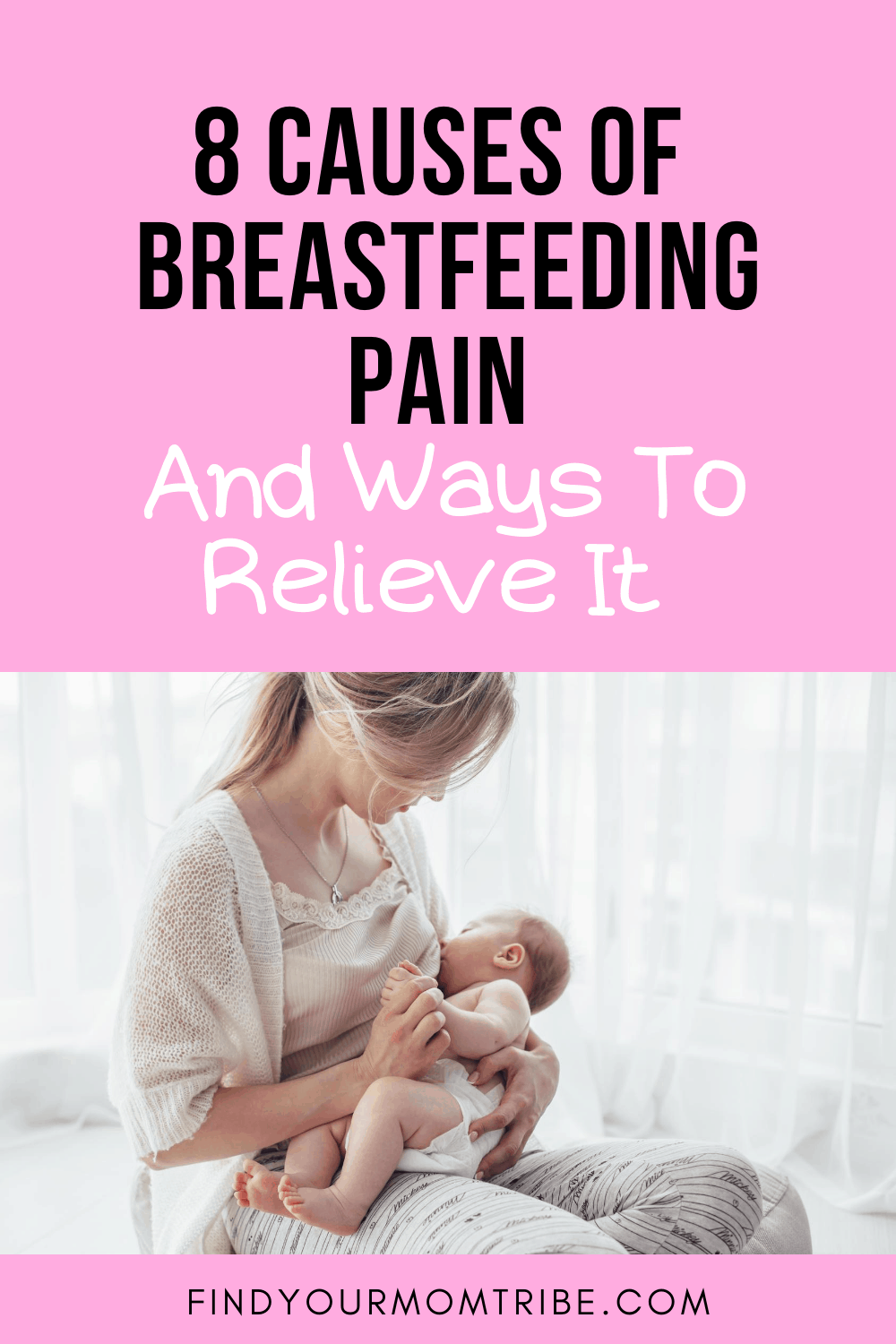
This post contains affiliate links. Please see our full disclosure for more info.

